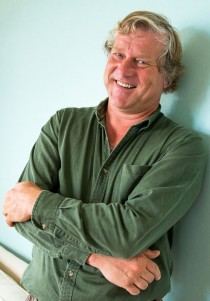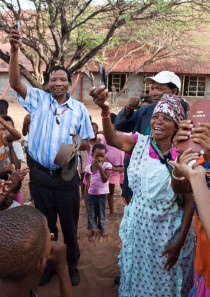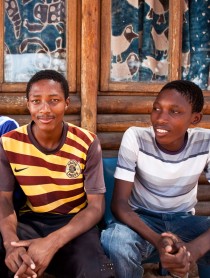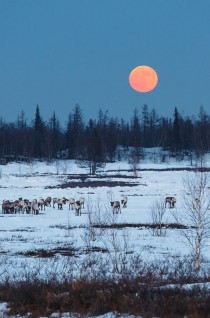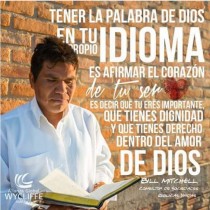Culmination! (and some Preamble)
|
It looks boring on the surface, but hundreds of colleagues from all over the world meeting together can actually be an emotionally-charged event. Believe it. You just have to be looking for it. Shooting at the Lausanne Congress taught me that a mere conference can be an exhilarating job. You’ve just got to throw yourself into it and train your eyes for all the little stories unfolding.
The PreambleSue and Eddie Arthur shared an emotional moment with my camera, and this time I’m lucky enough to hear the full story.
Eight hectic days later the conference was wrapping up and everyone was hugging each other with tearful goodbyes. I spotted my colleagues Eddie and Sue (Wycliffe UK Directors) having a big teary hug in the middle of the room and, as they appeared especially upset, I kept a bit of distance, put myself out of their line of vision and got a few shots without interrupting their moment. I felt a bit bad doing this, but like I said, you’ve got to push those feelings away and keep shooting! I figured that they were upset about saying goodbye. I sheepishly sent Eddie a copy of this shot the week after the conference, just in case he might like it, with a note saying something like, “Here’s a shot of you both feeling sad at the end of the conference. Aw. That’s right, when you are at your most vulnerable, I’ll be there with the camera. Sorry about that. I didn’t put this on the public page, but thought I’d send it to you. You two are cute.” Eddie wrote back with passive correction to my assumption, saying, “I didn’t know you had taken this one of Sue and I not smiling!” Then Eddie published this following post on his blog, kouya.net, a few days later. Wow. I had no idea why they were crying but I’m so glad I took that shot! It just goes to show – you never know – so keep shooting!
Culmination!Adapted from the original post on Kouya.netIt was the last day of Wycliffe’s 2012 international gathering in Thailand. For seven days, five hundred leaders of Bible translation organisations from over sixty five countries had met together to pray, to discuss and to seek God’s will for the future. As the conference closed, the chair called for a time of prayer and suggested that people should stand up and pray in their mother tongue. One by one, people stood up in the huge conference hall to pray. There were prayers in English, in Spanish and then a young West African stood up to pray… Dide -Lagɔɔ. -Jejitapε, -mι na ‘paa fuo, -mι na ‘paa yuo… I buried my face in my hands and sobbed my heart out. The young man was Didier and he was praying in Kouya. Didier, whom we first met in his home village of Gouabafla while he was at school, who joined the Kouya translation team in Abidjan and who committed his life to the Lord while working on John’s Gospel, is now the director of a linguistics and translation organisation in Ivory Coast. Didier is now an honoured and respected leader in the international Bible translation movement. Kouya is a language which people who live within thirty miles of Kouya-land have never heard of. This tiny, little-known language from the Ivorian rain forest was being used to worship the Lord alongside all of the famous languages of the world. I’ve often told the story of the old Kouya man who rejoiced when he saw Kouya written down, saying that now Kouya took its place alongside English, French and German because those languages had paper, and now Kouya had paper, too. As Didier prayed, we saw that principle lived out in practice. A little bit of Revelation 7 taking place before our eyes. Scholars generally highlight two key impacts of Bible translation: God reveals himself to people through his Word and draws them to himself; and minority languages and people groups gain dignity and self worth as vehicles of the Good News. There in that conference hall in Thailand, we saw those two principles worked out in a few simple words as the Kouya people and language took their place on the world stage. Sue and I were both involved in running that final conference session, so we weren’t sitting together, but when the meeting ended we met in the middle of the room and oblivious to everyone else (including the photographer) we wept for joy at what God had done and for the privilege of seeing Him at work. |



 Shooting a conference is a tough gig. The lighting is terrible, you constantly feel in the way, and basically the same thing happens every day: people sitting at tables, people speaking with a microphone, people clapping. It’s tempting to shoot all this stuff on the first day and then sit back and surf the internet in the corner. Really tempting.
Shooting a conference is a tough gig. The lighting is terrible, you constantly feel in the way, and basically the same thing happens every day: people sitting at tables, people speaking with a microphone, people clapping. It’s tempting to shoot all this stuff on the first day and then sit back and surf the internet in the corner. Really tempting. This includes photographing people when they are being emotional. Shoot them when they are dancing for joy? Of course! Shoot them when they are laughing and hugging each other? When better?! Shoot them when their faces are red from tears? ahhhh…..? A good photojournalist will document action and emotion without hesitation. I never publish an image that is unflattering (that just makes me look bad at the end of the day) but if people are being emotional in public I push through those pangs of guilt and keep shooting! Sensitively, a little conspicuously, but nonetheless, I keep shooting. You never know the story behind that moment.
This includes photographing people when they are being emotional. Shoot them when they are dancing for joy? Of course! Shoot them when they are laughing and hugging each other? When better?! Shoot them when their faces are red from tears? ahhhh…..? A good photojournalist will document action and emotion without hesitation. I never publish an image that is unflattering (that just makes me look bad at the end of the day) but if people are being emotional in public I push through those pangs of guilt and keep shooting! Sensitively, a little conspicuously, but nonetheless, I keep shooting. You never know the story behind that moment. 
